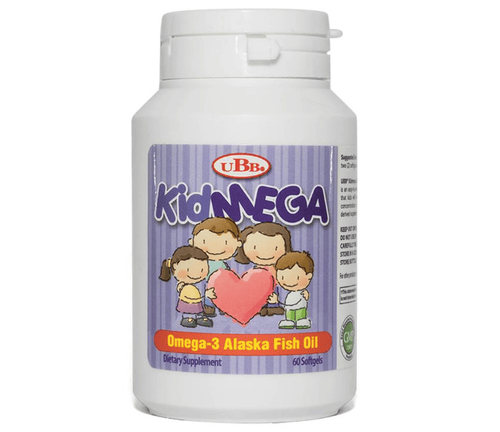This is an automatically translated article.
Fish is a protein-rich food that many people love and eat on a regular basis. It is estimated that we eat more than 150 million tons of fish every year. Fish meat is a food that contains many nutrients, delicious and healthy for meals. The question is whether eating fish skin is safe and healthy?
1. Is eating fish skin good?
Some people avoid eating fish skin for fear that it is unsafe, although this is not true. Fish skin has been considered a safe food for a long time. It is even a popular snack in many countries and cultures. As long as the fish has been cleaned properly and the outer scales are completely removed. Because fish is a great source of nutrients like iron and omega-3 fatty acids. So the US Food and Drug Administration (FDA) recommends, we should eat 113 grams of fish two to three times a week. However, some types of fish contain high levels of mercury and contain toxins and contaminants both in the flesh and in the skin. Therefore, it is advisable to choose fish with a low mercury content to eat. Here are a few examples of typical mercury levels of some fish
Low-mercury fish: catfish, cod, halibut, pollock, salmon, tilapia, fish tuna.
Medium-mercury fish: carp, grouper, flounder, snapper
High-mercury fish: mackerel, marlin, shark, swordfish, tilefish
Fish skin without any greater health risks than eating fish. You should choose fish with low mercury content to eat fish skin.

Ăn da cá không có bất kỳ rủi ro nào nguy hiểm hơn là ăn thịt cá
2. Nutrition of fish skin
The nutrients of fish skin vary considerably depending on the type. Most fish contain a few important nutrients.
Eating fish skin from fatty and lean fish can provide a wide range of nutrients, including:
Protein Omega-3 Fatty Acids Vitamin D Vitamin E Iodine Selenium Taurine Here are some of the specific benefits that nutrients provide. nutrition in fish skin can provide.
Fish skin provides good protein
Fish and its skin include an excellent source of protein, which is an essential nutrient that plays a role in building tissues like muscles in the human body. Protein also contributes in promoting health by reducing the risk of certain disorders such as stunted growth, low iron levels and swelling in the body. Furthermore, some proteins such as histones and transferrin play a role in enhancing immunity. Many of these proteins are present in the mucus of fish skin.
Fish skin is rich in protective omega-3s
One of the best known benefits of fatty fish is its high content of beneficial fatty acids. Consuming omega-3 fatty acids in fish skin can contribute to optimal health with benefits such as heart protection, healthy pregnancy and reduced risk of brain diseases.

Omega-3 trong cá mang lại nhiều lợi ích cho cơ thể
Fish skin improves skin
Eating fish skin can also improve skin health. Since fish skin contains a rich source of collagen and vitamin E, both of which contribute to healthy skin. Studies have found that collagen can improve skin hydration, increase elasticity, and reduce signs of aging like wrinkles. Collagen is a protein found in all parts and types of fish. Therefore, we will probably find it in the scales, bones, flesh and skin of fish.
On the other hand, vitamin E is a fat-soluble antioxidant commonly found in oily fish like salmon. Vitamin E supports skin health by protecting against sun damage and by improving symptoms of certain skin conditions such as eczema.
Fish skin can increase nutrient intake
Eating the skin along with fish flesh helps you get as many nutrients as possible from the fish. By removing the skin and eating only the meat, you're missing out on many of the nutrients and beneficial fish oils in the skin, as well as removing those found in mucus and the layers of flesh just beneath the skin.
3. How to prepare and eat fish skin
To get the nutrients of fish skin . Prepare it in the following ways:
When you have a piece of fish skin, try sautéing or grilling on high heat with the skin underneath until the skin becomes crispy. Avoid boiling and steaming the fish skin as this can lead to the skin becoming soggy and slimy.

Da cá nên xào hoặc nướng ở nhiệt độ cao để da được giòn
Also, keep in mind that the taste of each fish skin is completely different. Delicious-skinned fish include bass, sea bass, halibut, mackerel, salmon, and snapper. On the other hand, monkfish, skate, swordfish and tuna skin will be less delicious.
The menu of dishes with fish skin is not uncommon in restaurants. It is often fried or cooked on its own and served as an appetizer or side dish. Fish skin can also be processed to become a snack in Asian dishes. In these snacks, the fish skin is often deep-fried, salted, and can be high in fat and sodium.
To enjoy snacks made from fish skin, you should fry it in moderation. If you have any underlying health conditions such as heart disease and high blood pressure, it is not advisable to consume much to avoid aggravating the condition.
Fish skin is a delicious and nutritious part of fish. It has many of the same nutrients found in fish meat. Eating fish with the skin on helps ensure nutrients are not lost during cooking. The nutrients in fish have many benefits for promoting skin health and cardiovascular system. Processed fish skin is very versatile to enjoy.
Any questions that need to be answered by a specialist doctor as well as customers wishing to be examined and treated at Vinmec International General Hospital, you can contact Vinmec Health System nationwide or register online HERE.
Source : healthline.com













